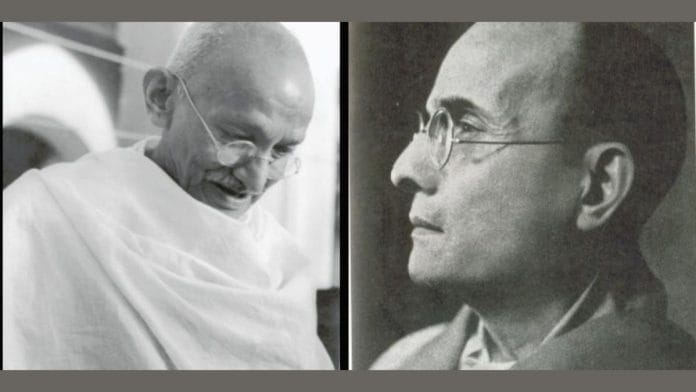Thank you dear subscribers, we are overwhelmed with your response.
Your Turn is a unique section from ThePrint featuring points of view from its subscribers. If you are a subscriber, have a point of view, please send it to us. If not, do subscribe here: https://theprint.in/subscribe/
During the BJP’s tenure in India, a series of troubling political developments have emerged, prompting concerns about the state of democracy. The trend of politicising religion has led to increased polarisation and division, while dissenting voices face suppression, resulting in a shrinking space for freedom of expression. Furthermore, there is a noticeable concentration of power and weakening of democratic institutions, alongside allegations of media manipulation and interference, which further undermine the checks and balances essential for a functional democracy. Additionally, the erosion of secular values and the marginalisation of religious and cultural minorities pose a threat to India’s diverse social fabric. The recent denial of farmers’ right to protest in Delhi, alongside perceived interference in investigative agencies, has heightened worries about democratic erosion. Moreover, the ease with which elected officials switch parties, often amid allegations of inducement, underscores growing concerns about the principles upheld by democracy.
The struggle appears to transcend the simplistic narrative of Hindu versus other religions; instead, it epitomises a clash between Hindutva proponents and Gandhian adherents within the Hindu community, all vying to safeguard the very democracy for which India fought. As we approach 2024 Loksabha elections, the looming question remains: which conception of Ram Rajya do we aspire to embrace—the imagined version proposed by Savarkar or the vision of Ram Rajya espoused by Gandhi?
The politicisation of Hinduism under the guise of protecting the religion is paradoxical, given that Hinduism is an umbrella religion encompassing devout worshippers and self-professed atheists alike. Embracing the notion of Sarva Dharma Sambhava, Gandhi championed the idea of equal respect for all religions. His interpretation went beyond mere religious rituals, viewing Hinduism as a holistic way of life that embodies moral and ethical values, representing a spiritualised worldview that transcends narrow political agendas. His advocacy for swadeshi (self-sufficiency) and the rejuvenation of rural economies reflected his vision of a fair and egalitarian society – the utopian Ram Rajya. This term encapsulates both the ideologies acknowledged within Hinduism – Gandhi’s inclusive Hinduism and Savarkar’s exclusive Hindutva.
The contrast ideological dichotomy between Mahatma Gandhi’s interpretation of Hinduism and Vinayak Damodar Savarkar’s concept of Hindutva has played a pivotal role in shaping India’s socio-political landscape.Gandhi’s vision of Ram Rajya, characterised by ideals of social harmony, economic justice, and political freedom, faces a threat from prevailing ideological currents that favour a very different interpretation of Ram. He aimed for perfect social harmony and equality whereas Hindutva ideology advocates for unbridled Hindu dominance, marginalising those who do not conform. Ram Rajya of Gandhi’s dream ensures equal rights alike of prince and pauper. He also described it as “sovereignty of the people based on pure moral authority”, meaning it would be democratic. Gandhi’s last words, "Hey Ram," today symbolises both a personal invocation and a lament for atrocities committed in the name of his God, contrary to the principles of Ram.
On the other hand, Savarkar’s idea of nationalism begins not by asking who is an Indian, but who is a Hindu? Coined by Savarkar, Hindutva embodies the cultural and national identity of Hindus. Unlike Gandhi’s inclusive approach, Hindutva exhibits exclusionary tendencies, raising doubts about the loyalty of non-Hindus and advocating for the establishment of a Hindu Rashtra, potentially marginalising religious and cultural minorities. It is characterised by aggressive nationalism and a desire for a unified India (Akhand Bharat) rooted in a common Hindu cultural heritage. Savarkar justifies the use of violence and expresses a desire for revenge against those who have humiliated Hindus, lamenting the apathy of Hindus towards such issues. This fervour for violence stands in contrast to Gandhi’s pacifist ideals of Ahimsa. While Hindutva might strike a chord with specific segments of the population, its potential repercussions on the secular and inclusive essence of Indian democracy cannot be overlooked.
According to Raghuramaraju, “While Savarkar sought to politicise religion, Gandhi pleaded for spiritualising politics.” Recognising this difference would immensely help us in articulating, and understanding the larger tensions between Gandhi’s and Savarkar’s Hinduism which is also reflected in contemporary Indian society.
In the magazine Young India, Gandhi wrote, ‘Whether the Ram of my imagination ever lived on this earth or not, the ancient ideal of Ram Rajya is undoubtedly one of true democracy, where even the meanest citizen could be assured of swift justice without an elaborate and costly procedure. Even an injured dog that sought justice in Ram’s court, as described by Valmiki, received justice under Ram Rajya.’
He stated, ‘Ram Rajya cannot exist in the current state of unjust inequalities where a few roll in riches while the masses struggle to feed themselves… My opposition to the Socialists and others lies in rejecting violence as a means for lasting reform.’ Gandhi argued that Ram Rajya’s realisation required internal transformations, opposing the prevalent impunity and majoritarianism in contemporary India.
The Congress party’s emphasis for a caste census and its focus on the five pillars of justice Nyay (justice), open dialogue, and outreach to marginalised and vulnerable individuals—closely aligns with Gandhi’s vision of Ram Rajya. Both Gandhi’s Ram Rajya and the Congress 2024 manifesto prioritise governance that is inclusive, equitable, and centred on the welfare of the common people.The decisions made today by the Indian voters, will undoubtedly influence the future trajectory of Indian democracy.
These pieces are being published as they have been received – they have not been edited/fact-checked by ThePrint.


